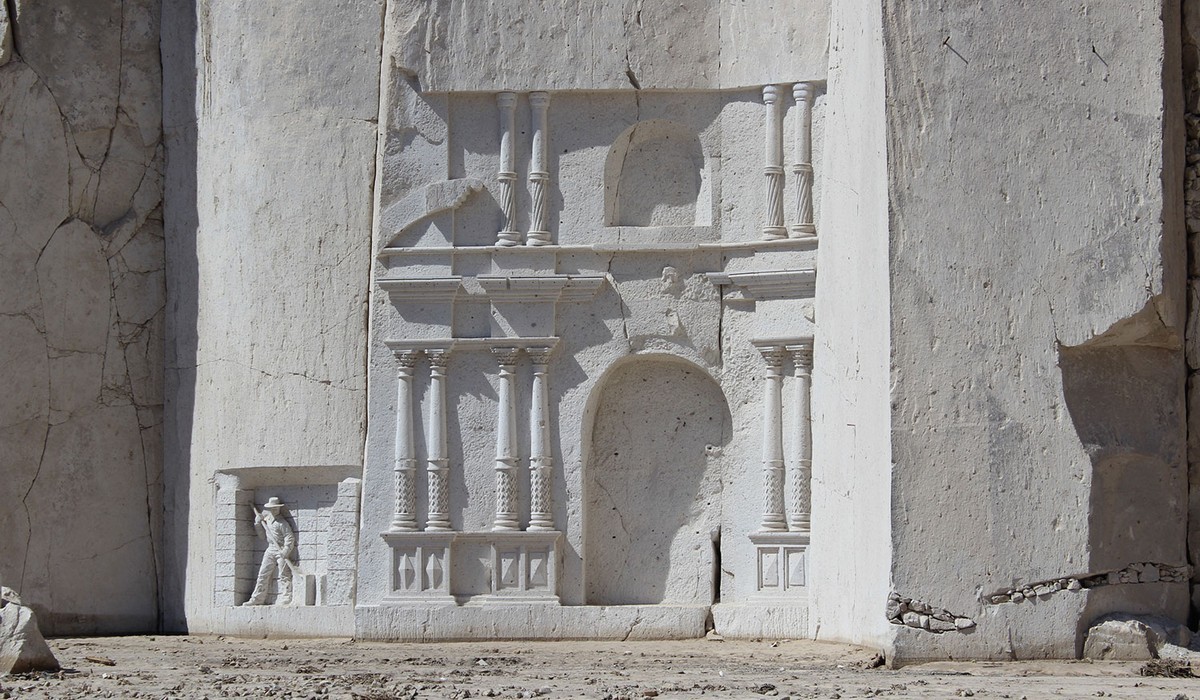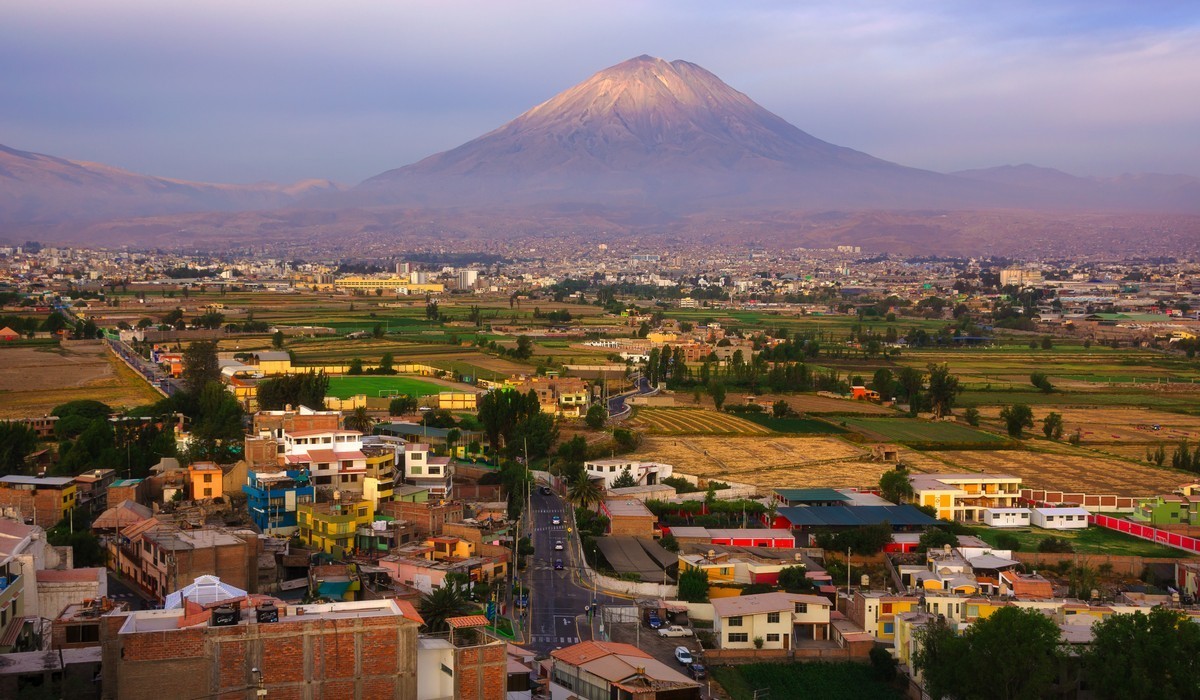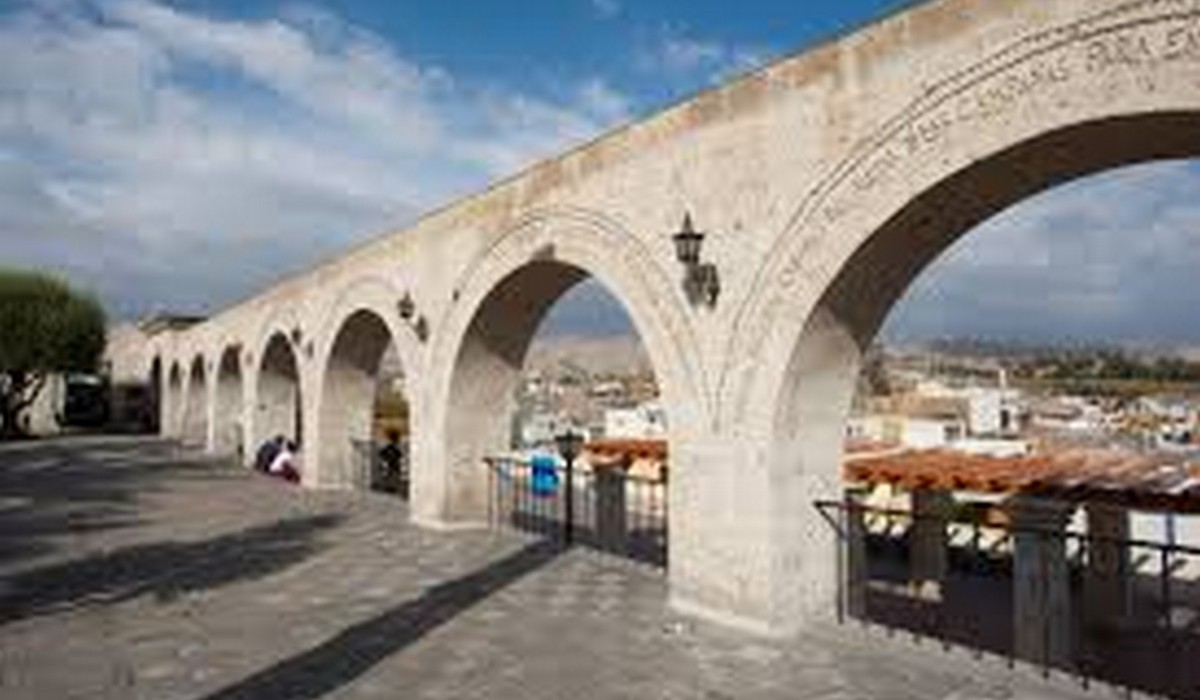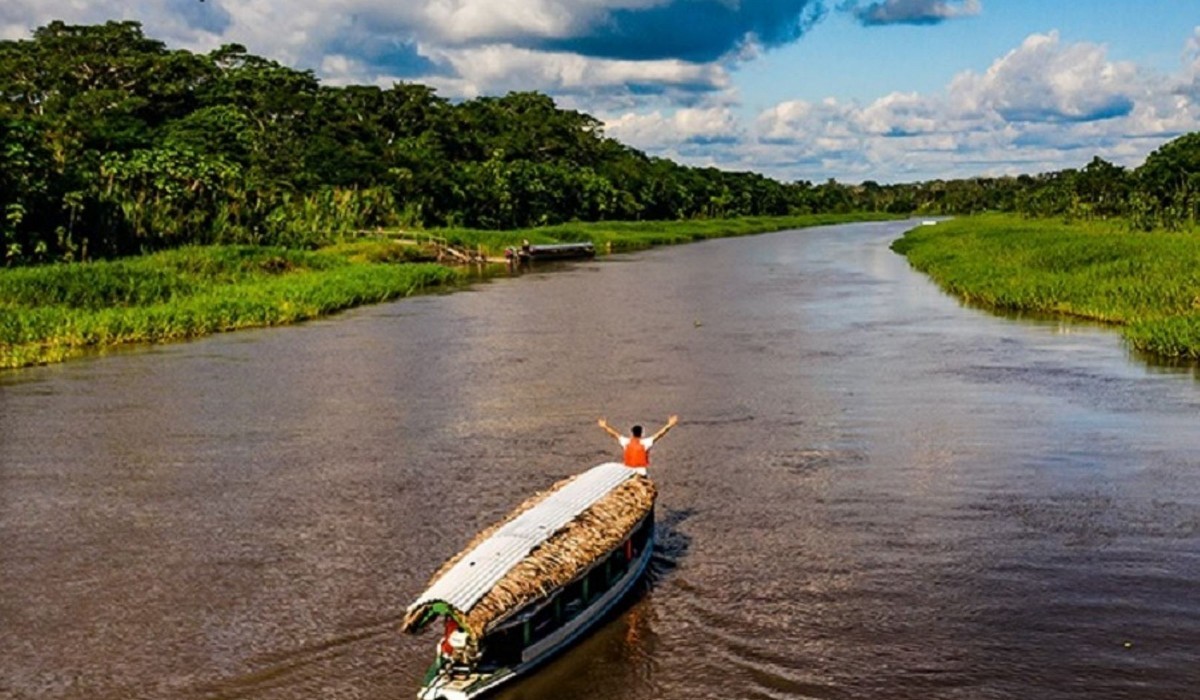Arequipa is one of the twenty-four departments that, together with the constitutional province of Callao, make up the Republic of Peru. Its capital and most populated city is the homonymous Arequipa. It is located in the south of the country, in addition to having 528 km of coastline in the Pacific Ocean —the longest departmental coastline— on its southwestern margin, and borders the departments of Moquegua to the east, Puno to the northeast, Cuzco, Apurímac and Ayacucho to the north, and Ica to the northwest.
The coastal zone is one of the driest portions of the coastal desert, while the interior Andean region presents steep valleys and canyons.
With 1,569,310 inhabitants in 2023, it is the fourth most populous —behind Lima, Piura and La Libertad5—, 71.3% of whom reside in the capital, the city of Arequipa.6
HISTORY
The Wari Empire initially occupied its territory. Later, the Churajón culture left traces of its passage in irrigation works, terraces and cultivated lands. In the north of its valleys, the Chuquibamba culture developed which extended to the southern provinces of Ayacucho and had contacts with Cusco. Legend mentions that the fourth Inca, Mayta Cápac, who was with his army in that area, founded Arequipa. When he ordered the displacement of his people, there were those who asked him to stay, answering the Inca “ari qipay”, which in the Quechua language means, “Yes, stay”.
Sometime later, the Spanish conquerors founded the capital of the region on the slopes of the Misti on August 15, 1540. After that date and for more than three centuries Spanish families populated the city. Thus, Arequipa was the city in Peru with the most Spaniards. Its first mayor was the conquistador D. Juan de la Torre y Díaz Chacón. In the Republican era, the uprisings of Ramón Castilla, Mariano Ignacio Prado, Nicolás de Piérola Villena, Luis Miguel Sánchez Cerro and others took place here. In modern times of political leaders like José Luis Bustamante y Rivero and Fernando Belaúnde Terry. Arequipa is the foundation of the economic complex of southern Peru.
Tiempo después, los conquistadores españoles fundaron la capital de la región en las faldas del Misti el 15 de agosto de 1540. Después de esa fecha y a lo largo de más de tres siglos la ciudad fue poblada por familias españolas. Es así que Arequipa fue la ciudad del Perú con más españoles. Su primer alcalde fue el conquistador D. Juan de la Torre y Díaz Chacón. En la época republicana ocurrieron aquí los alzamientos de Ramón Castilla, Mariano Ignacio Prado, Nicolás de Piérola Villena, Luis Miguel Sánchez Cerro y otros más. En época moderna de estadistas como José Luis Bustamante y Rivero y Fernando Belaúnde Terry. Arequipa es el cimiento del complejo económico del sur del Perú.
GEOGRAPHY
It is located in the southwest of Peru, facing the Pacific Ocean with 527 kilometers of coastline. That is why it is the commercial center of the southern part of the country, which includes the departments of Apurímac, Cusco, Madre de Dios, Moquegua, Puno and Tacna; and, it is part of the southern Peruvian tourist corridor, which means that it is interconnected with 40% of the country, and perched on a slope or slope in the Andes Mountains. It limits to the northwest with Ica and Ayacucho; to the north, with Apurímac and Cusco; to the east, with Moquegua and Puno; to the southwest, with the Pacific Ocean.
South latitude: 14º36′6″.
West Longitude: Between meridians 71º59′39″ and 75º5′52″.
Climate: The Arequipa region has diverse climates in its territory, ranging from warm and temperate (characteristic of the coast) to glacier and perpetual snow (in the high mountains). It is warm on the coast, the sectors near the sea have a very humid climate, with winter drizzles typical of high humidity, but little significant rainfall, with temperatures between 14 °C and 27 °C degrees in sectors near the sea and temperatures approximate between 10 °C and 35 °C degrees in sectors such as Acari.
At a thousand meters of altitude, the climate varies from temperate-warm to temperate, temperate-cold and cold in the mountains that dominate the landscape; the variation of the temperature is notorious between the sun and the shade and between the day and the night.
In the high punas the temperature drops considerably, exceeding 0 °C only in the warmest month. However, it must be taken into account that this average can vary during the year. Snowfalls are frequent, with a higher incidence in the months of July and August in sectors above 4000 m a.s.l. no. m. and temperatures below −20 °C, there are hailstorms, a phenomenon that causes great economic losses among farmers and ranchers in the region. The rains in the Andean region fall regularly between the months of January and March. On the coast, drizzles or drizzles are frequent, as well as mists at ground level.
Most important rivers: Tambo, Ocoña, Majes and Chili.
Volcanoes: Coropuna (6,425 m a.s.l.), Ampato (6,288 m a.s.l.), Solimana (6,093 m a.s.l.), Hualca Hualca (6,025 m a.s.l.), Chachani (6,057 m a.s.l.), Misti (5,822 m a.s.l.) and Pichu Pichu (56 64 m a.s.l. ).
Mountain ranges: Cordillera de Ampato, Cordillera Chila, Cordillera Huanzo and Cordillera Volcánica.
Abras: Apo Apacheta (5100 m.a.s.l.) in Castilla; Chucura (4,720 m a.s.l.) in Caylloma and Visca (4,650 m a.s.l.) between La Unión and Condesuyos.
Islands: Hornillos, Blanca, Casca and Saragosa.
Lagoons: Mucurca, Huanzo, Ecma, Chachas, Peñane, Del Indio, Salinas and the Lagunas de Mejía National Reserve.
TRANSPORTATION
Seaport: Mollendo (Matarani)
Railway: Mollendo-Matarani – Arequipa – Juliaca – Puno – Cusco – Machu Picchu.
Airport: International Airport
INTEROCEANIC HIGHWAY
This road has an extension of 2,603 km (of 1,071 km corresponding to roads that must be paved, 1,514 km of paved roads and 17.5 km of urban roads, not including the urban area of Juliaca). These works will connect three Peruvian ports in the Pacific Ocean: San Juan de Marcona, Matarani and Ilo, with Iñapari on the border with Brazil.
The highway is part of the Regional Infrastructure of South America Integration (IIRSA), which seeks the commercial integration of the departments of Madre de Dios, Puno, Cusco, Tacna, Moquegua, Arequipa, Ica, Ayacucho, Apurímac and Huancavelica.
It is estimated that the highway will allow products from the southern Peruvian departments to enter the Brazilian market and goods from Acre and Rondonia in Brazil, and ultimately those from the Amazon and Mato Grosso, to enter Peru.
GASTRONOMY
Stuffed rocotos, fresh out of the oven.
The Arequipa pantry stands out for the variety of crops and food products such as rocotos and chili peppers, assorted fruits, vegetables, beef, ram, guinea pig, pork, alpaca, ostrich, a variety of fish and in a great way shrimp, milk and cheeses. Wines and piscos, corn chicha, etc. One of the peculiar characteristics of the food is the spiciness; this means that the places where they are sold are called picanterías.12
The diversity of this mestizo cuisine can be summarized in the existence of broths or chupes for each of the days, Monday “chaque”; Tuesday “chairo”; Wednesday “pebre”; Thursday “timpusca” (in pear season) or “menestrón”; Friday “chupe de camarones”; Saturday “tail time” or “puchero”; Sunday “white loins broth”.
It is known in the country for its stews and stews prepared over a wood fire and in clay pots. Among the best known are the chupe de camarones, ocopa arequipeña, stuffed rocoto, pork marinade, cheese single, potato cake, chactado guinea pig, cheese rubber, chest locro and chaque to name a few. The typical Arequipeño dessert is ice cream cheese, and as a drink, in addition to chicha de jora, nájar anise.
TOURIST ATTRACTIONS
• The original “Wititi” dance by Tapay natives.
• Punta de Bombón beaches.
• Crystal clear water in Caleta Catarindo, Mollendo, Islay.
• Chira Beach, Camana.
• The Misti volcano is imposing built on a serene countryside with springs, old mills (in Sabandía), thermal baths (in Yura and Socosani), and small Andalusian-type alleys (Yanahuara) and, not far away, a village rooted in a stony hill (Sachaca). The use of ashlar stone (volcanic mineral) in the construction of temples, convents and mansions give the city a peculiar appearance. The most visited places are the Colca Valley and its canyon (which is one of the deepest in the world) and because of the current permanence of three living cultures: the “Kawanas”, “Kollawas” and the “Ccaccatapay”, with their music. In addition, ancient customs, the petroglyphs of Toro Muerto, the valley and canyon of Cotahuasi. Likewise, the Andahua caves and the Socabaya caverns. In the city of Arequipa, the monastery of Santa Catalina, founded in 1580.
Other places to visit are:
• Valley of the Volcanoes. It is 377 kilometers from Arequipa in Andahua. You can see an incredible landscape made up of around 80 small volcanoes, which give the appearance of the lunar surface.
• National Sanctuary of Lagunas de Mejía. Located on the coast, 20 kilometers from the city of Mollendo. Natural setting of 690 hectares with waters of different degrees of salinity, marshes, reeds, salt flats and grasslands. They can be distinguished up to 157 species of birds.
• Sumbay Caves. 88 kilometers from the capital. Despite the time, valuable cave paintings from the Paleolithic era are preserved inside. Their rocky walls represent human figures, llamas, pumas, etc.
• Imata Stone Forest. Very original rock formation located on the way to Puno. Set of natural lithic columns that take the appearance of a mysterious enchanted forest.
• Mollendo beaches. Large seaside resort in southern Peru, two hours from Arequipa, extensive beaches and a place of leisure for young people in the summer, free from pollution, and fishing and spearfishing areas with water parks. It is the most important and popular spa in the department and in southern Peru.
• Beaches in Camana. Spa 3 hours from the City of Arequipa.
• Arequipa countryside. Agricultural rural area in the surroundings of the city, with platforms dating from the Inca period.
• Colonial Churches. Religious constructions made of ashlar (white volcanic stone).
TOURIST CALENDAR
• January 6th. Molendo Anniversary. Celebration of the Descent of the Kings in Tiabaya.
• February 2. Festival of the Virgen de la Candelaria in the district of Chivay.
• February 2. Festival of the Virgin of Candelaria in the District of Quilca – Camaná
• February 3rd. Festival of the Virgin of Candelaria in the district of Cayma and Characato. In Caravelí the Virgen del Buen Paso is celebrated; The festivities last 4 days and there are cockfights, bullfights and parades of Paso horses.
• Easter week. Religious acts throughout the department, with processions and spiritual recollection. Men and women wear mourning.
• May 1. Pilgrimage to the Sanctuary of the Virgin of Chapi, 45 kilometers from the capital. Pilgrims from all parts of the country and from this part of the continent arrive to greet their patron saint.
• August 15th. Arequipa Anniversary. Civic-religious festivities that last a week with different artistic and cultural activities, cockfights, sports activities and the burning of fireworks and privateering. Artists from abroad attend. In Castilla it is the Feast of the Virgin of the Assumption; with popular festivals, privateering and competition between districts.
• August 30th. Santa Rosa. Typically, religious festival that is celebrated in Caravelí, with masses, processions and churches profusely arranged with flowers and various decorations. In Castilla there are popular festivals, contests and sports festivals.
• September 8th. Virgin of Las Peñas in Castilla. Great display of Folklore, especially in Aplao. The butlers go out of their way to make visitors feel comfortable.
• November 1st. All Saints Day. Entire families go to cemeteries bringing music and food to accompany their deceased. The fiesta of the iron cross in Mollendo.
• November 9. Jubilee Day of Camana. The entire population takes to the streets to dance, sing and have fun.
• December 8. Feast of the Immaculate in [Chuquibamba [Chivay]] and Cayma.
• December 31. Feast of the Lord of the Forsaken in La Punta de Bombón.
THE EIGHT BEST AREQUIPA TOURS
- Arequipa City Tour.
- Tour to the Colca Canyon.
- Boating tour on the Chili River.
- Gastronomic tour in Arequipa.
- Sillar route tour.
- Tour through the reserve of Salinas and Aguada Blanca.
- Tour to the Pillones waterfall and the Imata stone forest.
- Adventure tour to the Misti volcano.







